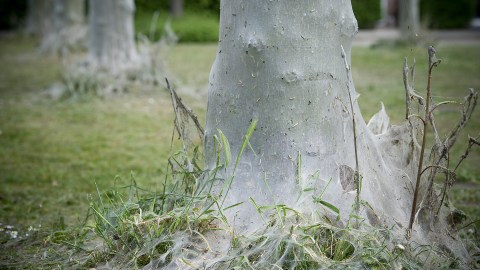London crawling: Deadly caterpillars invade London

London. Most of the time, it’s a premier tourist destination, a financial hub (well, until Brexit), and one of the world’s best sources of droll humor. But if you happen to be in England’s capital, whatever you do, don’t touch the caterpillars.
A particular breed of caterpillar (well, technically the larval stage of the oak processionary moth—or OPM if you’re into the whole brevity thing), has invaded London and has been deemed toxic by authorities at the UK’s Forestry Commision. Since they have started hatching over the last couple of weeks, the caterpillar’s 62,000 ultra-fine hairs appear to trigger severe allergic reactions in humans. The hairs, which the creatures can eject if threatened, contain a protein called thaumetopoein that appears to be the source of the allergy symptoms. The BBC reports that these hairs themselves can last up to 5 years on the ground, while the caterpillar will only last until late May or mid-June before turning into a not-so-deadly moth.
It can cause skin rash, difficulty breathing, and even death by anaphylactic shock. It also tends to kill the oak trees that they thrive on. The nests — which the Forestry Commision has warned Britons to steer clear of — tend to look like overgrown and slightly bulbous cobwebs.
Unfortunately, this isn’t anything new. It might surprise you to learn that there are actually several dozen potentially deadly caterpillar breeds all over the world, the most notable populations living in Texas, Florida, Brazil, and even a notable recent outbreak in Spain. In any case, the creepy crawlies in London haven’t killed anyone yet but this is arguably the worst critter outbreak the nation has seen since the Beatles.
Sorry, couldn’t resist.





